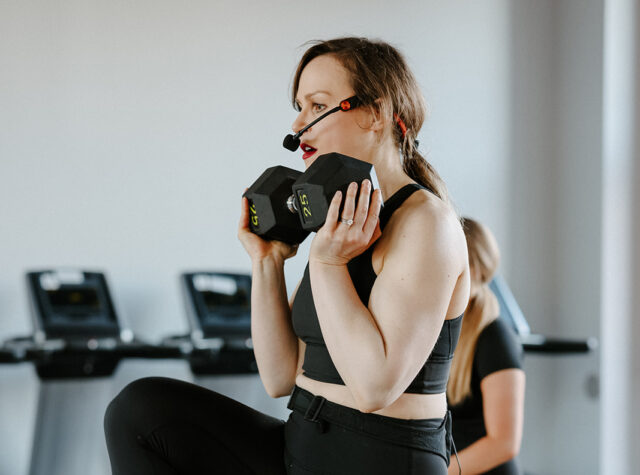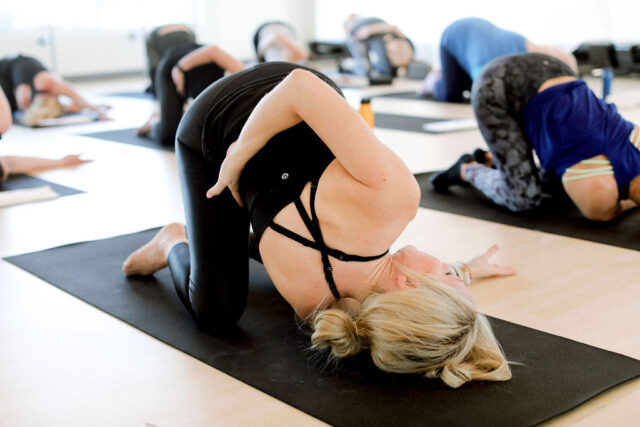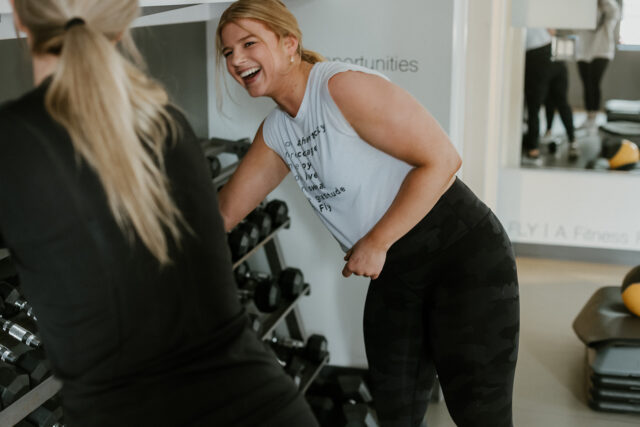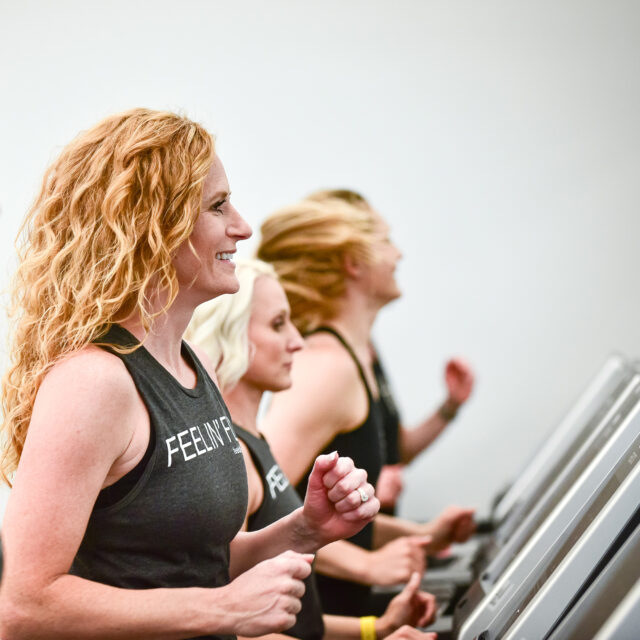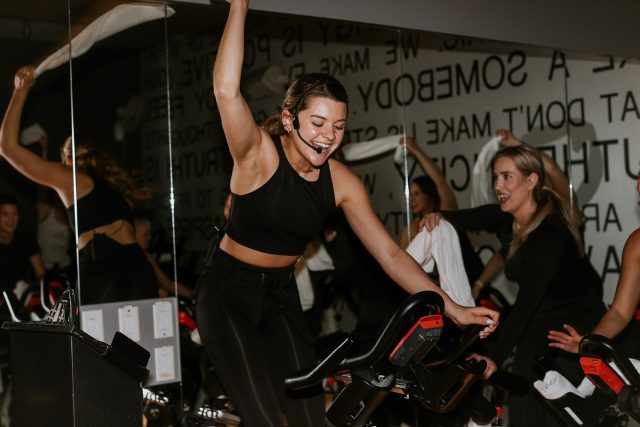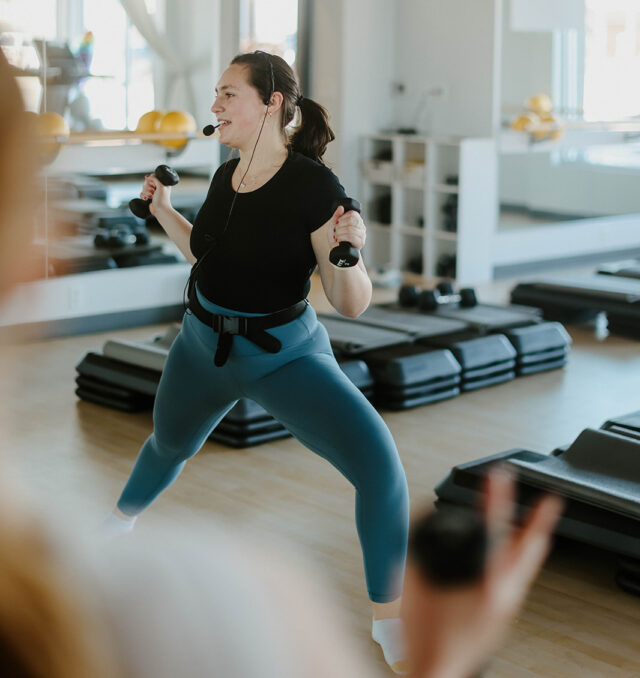Why You Should Try Heavier Weights
- By Morgan Horton
- October 3, 2019
Do you avoid heavy weights for fear of bulking up? Do you think you can’t increase your weight because you won’t be able to finish out the workout? Choosing heavier weights can help you transform your usual workout by building a stronger, longer and more stable you. You’ll notice improved posture, a more upright spine and a stronger core. Dr. Jenni Bruning Brown, owner of Fly | A Fitness Revolution says that adding heavier weights and slower movements into a couple workouts a week is something that can push you to a new level, firing up and strengthening your body in a number of ways.
Here’s some pointers on using heavier weights:
1. Test yourself. Adding even a few pounds to your normal weight routine will allow you to test your grit during workout class. Try to explore more resistance and see what weight will work for you. Dr. Bruning Brown says that when beginning, try 2- or 3-pound weights for a cycle, barre or yoga class, or 5-8-pound weights for a high intensity strength class. If you’ve been going for awhile, try upping your weight by 1 or 2 pounds. So if you typically use 3 or 4 pound weights in cycle class, increase to a 5-pound weight. Dr. Bruning Brown recommends that in barre or cycle classes at Fly, a general rule of thumb is using anything between no weight and up to 6-8 pounds. In a high intensity class, the range is generally no less than 5 pounds, and moving up to 15-20 pound weights or more if you’re experienced or interested in heavy weights. She says that if you feel like the weight is too much while you’re in class, just get two sets before class and know you can move to your lighter set.
2. Listen to your body. Dr. Bruning Brown says that there will be days where your body can handle the extra resistance, but other times where you need to use lighter ones. On the days your body is feeling strong, grab a heavier set and on the days where you feel a little sore or tired, try focusing more on form and movement.
3. You might be sore, but it’s a good sore. Dr. Bruning Brown says that while adding heavier weights often can lead to a little extra muscle soreness for your first few classes, your upper body will also feel stronger, posture will improve and you’ll increase stability through the core. By slowing down and focusing on form while using heavier weight, we build and improve both lower and upper body strength. For example, in a squat position using a heavier weight, you are using not only quadricep and hamstring muscles, but also the erector spinae muscles that run all the way up into your middle back. You also use glutes and core to lift and hold stable, which helps to increase strength and mobility.
4. Just do it. Dr. Bruning Brown says that just trying a higher set of weights is the hardest part. When you’re used to always using the same amount, you often have a mental barrier about what you’re capable of doing. She recommends deciding to do it before you go to class and deciding you’ll stick with it for at least one class. She often hears women complaining that they don’t want to add heavier weight (or added resistance in cycle class) for fear of “bulking up.” Dr. Bruning Brown says that this is actually the opposite and that “using more resistance or lifting heavier builds lean muscle, which increases your base metabolic rate and, in turn, burns more calories.
Are you ready to try one of Fly’s barre, cycle, yoga or high intensity classes and challenge yourself with a heavier set of weights? Sign up here.

